Skateboard Buying Guide for Intermediate Skaters
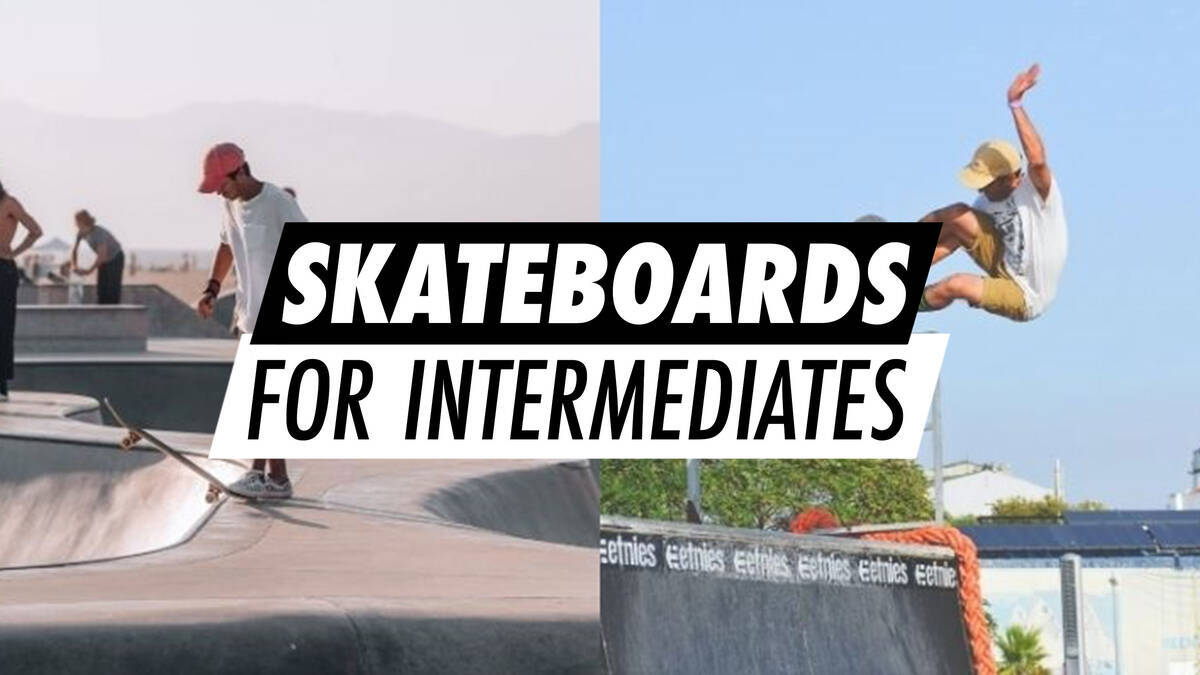
Whether you're acquiring a new complete skateboard or updating your current setup with new, superior components, this guide aims to offer the necessary advice for purchasing the perfect skateboard tailored for intermediates focusing on honing skills and mastering new tricks.
Overview
Overview
Varieties of Skateboards � Distinct Skateboards for Various Styles

All skateboards are constructed with a deck, two trucks, and four wheels, yet they differ in specifics and measurements. Thus, it's vital to ponder: What kind of skateboarder am I?
Are you mainly concentrating on technical flip tricks, or do you delight in tackling large stairs? Do you favour street spots, skateparks, or transition skateboarding such as vert and bowls? Your skateboarding style significantly influences your choice when attempting to find a skateboard that perfectly aligns with your needs.
However, the majority of skateboarders don't confine themselves to a single skateboarding discipline, and limiting yourself strictly would be monotonous. It's not necessary to own a different skateboard for every type of skateboarding, yet focusing on your primary interest when acquiring a new skateboard is advisable.
We've categorised skateboarding into three primary disciplines: street, park, and transition. But don’t feel constrained by these categories; if you have a street-oriented setup and spontaneously decide to skate in a bowl � go for it!
Transition Skateboards: Pool and Vert Skateboards
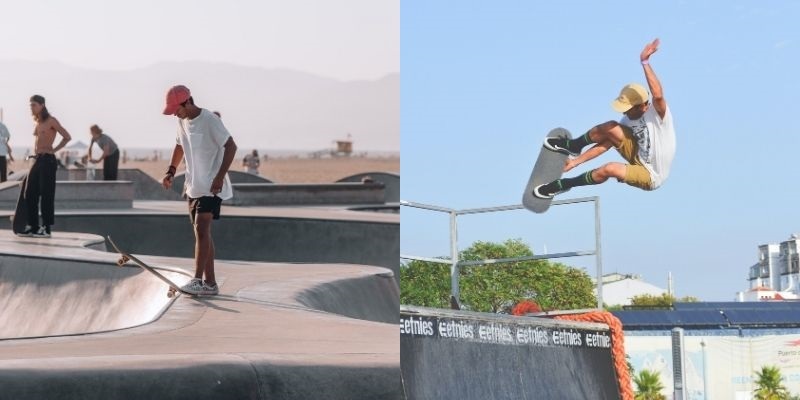
Transition skateboards are crafted for tricks on quarter pipes, half pipes, and bowls with transitions shifting from horizontal to vertical at a 90-degree angle. Vert skateboarding, among the most iconic skateboarding styles, is celebrated for its substantial air tricks on enormous half pipes. Practice of vert requires a notable amount of bravery.
Skateboarding pools and bowls constitute a unique form of transitional skateboarding and are indeed vert's predecessor. Historically, skateboarders skated in empty swimming pools, which ultimately inspired the creation of dedicated skate pools and bowls.
Transition skateboards, whether pool or vert, generally have larger wheels and decks than street setups. The heightened speeds and grander tricks of transition skateboarding necessitate a more robust setup. In transition setups, a more extensive wheelbase is also typical, offering improved stability and control. A broader wheelbase means a wider turning radius. Nonetheless, this might not be ideal if you relish "surfing" in pools and bowls, where tighter turning capabilities for carving and changing direction may be preferred.
Street Skateboards
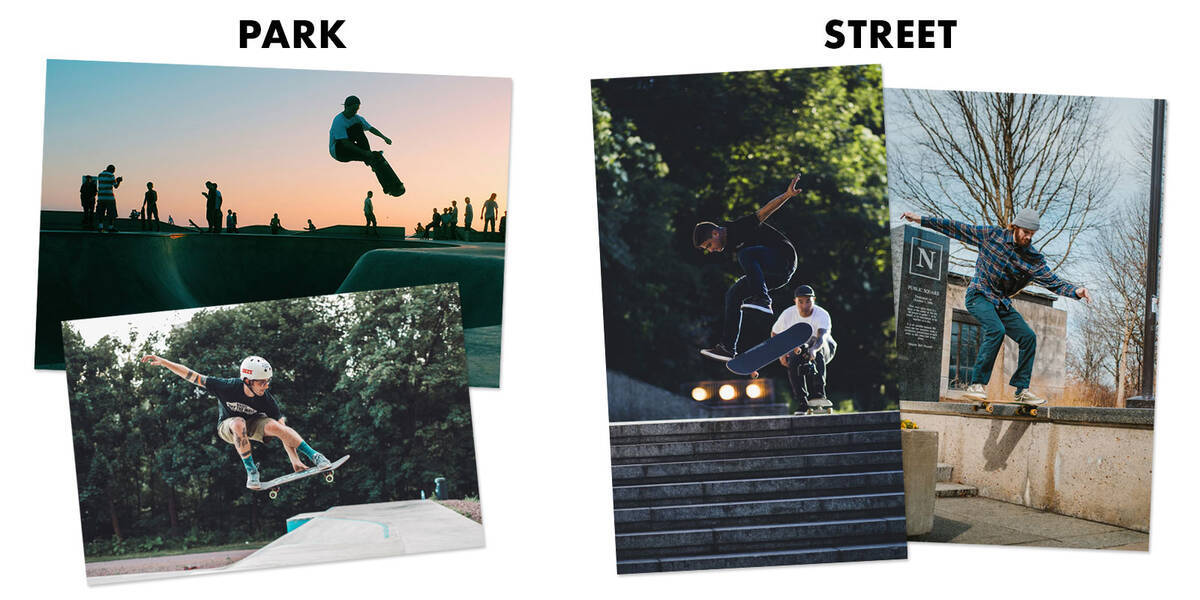
Street skateboards are, as a rule, narrower and lower than transition skateboards. They come with smaller, harder wheels for better manoeuvrability and durability, enhancing responsiveness and making flipping and spinning tricks easier.
Street skateboarding is frequently associated with a development in skateboard design featuring kicktails on both ends. This innovation eventually led to the popsicle skateboard deck shape, which has largely become a standard. The double kicktails make it feasible to execute lines containing multiple consecutive tricks, using the skateboard from all angles while performing tricks in a fakie stance or popping nollie tricks and so on.
Street skateboarding is an art form involving a transformative and imaginative engagement with the urban environment. Skateboarders repurpose cityscapes, turning typical objects like stairs and handrails into opportunities for creative expression and experimentation. This dynamic interaction has propelled skateboarding in novel and intriguing directions since the late 1980s and early 90s.
Park Skateboards
The ultimate park skateboard setup depends on both a) your preferences and b) the specific park you frequently skate in. Skateparks vary greatly, featuring an array of obstacles from ramps and rails to verts and bowls.
Surfaces can vary from concrete to asphalt to wooden, with parks differing in size from large arenas designed for competitions to smaller, makeshift areas for casual skate sessions with friends.
Therefore, there is no universal setup for park skateboarding, and if parks are where you predominantly skate, forming your setup around the one(s) that suit your chosen park is natural. For instance, if your preferred skate park boasts smooth, slippery floors, choosing a slightly softer durometer rating can improve grip and overall performance.
Complete or Custom Skateboard � Is Investing in Complete Skateboards Sensible for Intermediate Skaters?
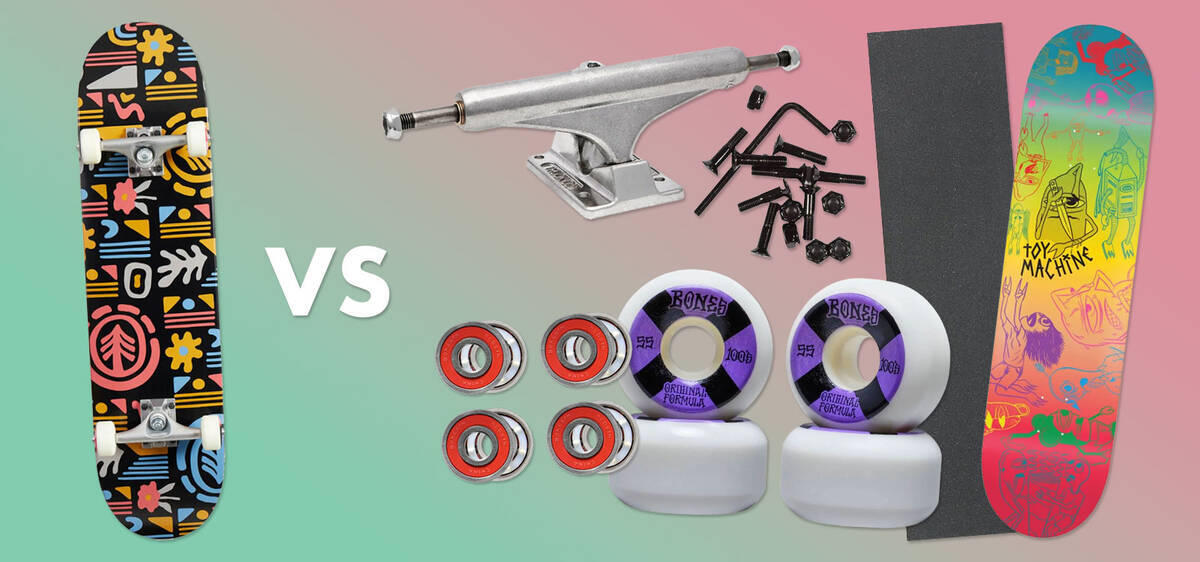
Opting for a complete skateboard can be a practical solution for intermediate skaters, particularly if an entire replacement of the current setup is needed. Nonetheless, it's vital to verify the complete skateboard fits your precise requirements and is constructed from decent components.
Complete skateboards frequently comprise parts that are of lower quality in comparison to components purchased separately, but a complete skateboard is also more budget-friendly. If you decide on a complete skateboard, prioritize well-known skateboard brands and examine key specifics like deck width, wood type (steer clear of Chinese maple), wheel diameter, wheel hardness, and truck manufacturer to ensure suitable performance and durability.
Crafting your skateboard allows for choosing each component according to your specific preferences. Additionally, you'll observe that certain parts of your setup may wear out quicker than others, necessitating customization.
The longevity of skateboard parts largely depends on your skateboarding style. Grinds will erode trucks more rapidly, while powerslides cause wheels to wear out. Typically, the deck sees the most rapid deterioration and, thus, requires more frequent replacements.
- Browse our selection of Complete Skateboards
- Create a custom skateboard with SkatePro's Custom Skateboard Builder
When Is It Time for a New Skateboard Deck?

It's time to replace your skateboard deck when it starts to chip or delaminate, and when it feels less rigid and loses its initial snappy pop. Even in the absence of visible damage signs such as chipping, over time it will become saggy and less satisfying to skate on. Ultimately, the right moment for getting a new skateboard deck is when you feel it will enhance your experience and enjoyment.
Selecting the Ideal Skateboard Deck
Picking the ideal skateboard deck involves considering factors beyond aesthetics. Elements such as size, shape, concave, and wood type significantly affect performance and comfort. Understanding how these factors interact with your skating style and personal preference is crucial when seeking the perfect skateboard deck.
- Size: Look for the perfect size based on your shoe size and skateboarding style. Ensure the deck's width aligns with your trucks' axle width.
- Wood Types: As an intermediate skateboarder, avoid softer woods like Chinese maple; generally, 7-ply maple is recommended.
- Concave: The deck's concave refers to the curvature along the width. Concave significantly influences the deck's feel and how securely it binds to your feet during rides.
Acquire expert advice on skateboard decks here:
What Is the Longevity of Skateboard Trucks?

High-quality skateboard trucks usually last for several years, though signs indicating a need for replacement exist. If the hangers are worn in a manner disrupting grinds or stalls, or if they've ground all way to the axle, it's a clear indication that new trucks are necessary. Should the kingpin snap due to heavy use, replacing just the kingpin is feasible. If your bushings experience faster wear than the rest of the truck, consider acquiring new skateboard bushings for a completely revitalised feel. And keep in mind, you always have the option to adjust your truck's tightness by either tightening or loosening the kingpin nut!
Browse our range of skateboard trucks and parts to find what you require:
Selecting the Right Skateboard Trucks
When purchasing new skateboard trucks, contemplate these crucial factors:
- Size: Ensure the width of the trucks matches the deck's width to maintain stability and avoid interference with your footwear during tricks.
- Truck Height: Opt for low, mid, or high trucks based on your preference for stability, wheel clearance, and ease of control.
- Truck Weight: Take the weight of the trucks into account; lighter trucks can offer advantages for tricks, yet remember weight corresponds with size.
If you're inclined to learn further about skateboard trucks, peruse our guide:
When Should You Replace Skateboard Wheels?
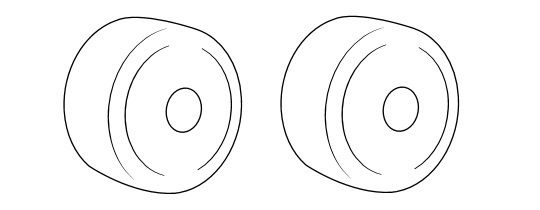
While skateboard wheels are robust, they eventually wear down through regular usage. You'll notice they diminish in size over time or develop flat spots where wear concentrates at a single point. These flat spots can be tedious and impede your skating experience. If you run into such issues, it may be time to invest in new skateboard wheels.
With time, skateboard wheels often wear more quickly on the outer edge, thereby reducing the contact patch or riding surface. To ensure even wear and prolong their lifespan, periodically rotating skateboard wheels is advisable. Following a cross-pattern: the front right wheel moves to the rear left, and the rear left shifts to the front right. Replicate this pattern for the other wheels. This approach helps distribute wear more evenly across the wheels.
Finding the Perfect Skateboard Wheels
Here’s a concise overview of what to consider when purchasing new skateboard wheels:
- Size/Diameter: Select the correct wheel size based on your skating style and terrain preference. Smaller wheels offer agility and responsiveness, while larger ones provide stability and speed.
- Hardness (Durometer): Decide on the suitable durometer rating for your wheels based on the surface you skate and your inclination for grip versus glide. Softer wheels grant more grip and shock absorption, while harder wheels yield increased speed and durability.
- Shape and Contact Patch: Reflect on the wheel's shape and the contact patch/riding surface size. Narrow contact patches render greater responsiveness and suit tricks better, while wider contact patches deliver superior grip and stability.
For more advice on skateboard wheels, check out our guide:
Choosing the Right Skateboard Size: How to Determine the Correct Skateboard Size for You
Choosing the appropriate skateboard deck size requires ensuring that the width is suitable for your feet and preferences, as it greatly affects how skateboarding feels. Consult a size chart to ascertain whether a narrower or broader deck aligns with your shoe size. A deck that is too narrow might feel unstable, whereas a wider deck could hinder manoeuvrability. Generally, if your shoe size is European 45 or above, it is advisable to select a deck no less than 8 inches wide for successful trick landings.
Bear in mind that the type of skateboarding you do and your individual preferences play an important role in selecting a deck size. For those who concentrate on pool or vert skateboarding, a deck wider than the chart's suggestion is typically ideal.
| Skateboard Width | Recommended Age | Shoe size US | Shoe size UK | Shoe size EU |
| 6.5" | 3 - 5 | 6C - 11C | 5Y - 10Y | 23 - 28 |
| 6.75" | 3 - 5 | 7C - 11C | 6Y - 10Y | 24 - 28 |
| 6.825" | 4 - 6 | 9C - 12C | 8Y - 11Y | 26 - 30 |
| 7.0" | 5 - 7 | 10C - 1 | 9Y - 12Y | 28 - 32 |
| 7.125" | 6 - 8 | 11C - 2 | 10Y - 1 | 29 - 33 |
| 7.25" | 7 - 9 | 12C - 3 | 11Y - 2 | 30 - 34 |
| 7.375" | 8 - 10 | 13C - 4 | 12Y - 3 | 31 - 35 |
| 7.5" | 9 - 11 | 1 - 6 | 13Y - 5 | 32 - 38 |
| 7.625" | 10 - 12 | 2 - 7 | 1 - 6 | 33 - 39 |
| 7.75" | 12 - 14 | 4 - 9 | 3 - 8 | 35 - 42 |
| 7.875" | 12 - 14 | 4 - 9 | 3 - 8 | 35 - 42 |
| 8" & Up | 14 & Up | 9 & Up | 8 & Up | 42 & Up |
Explore our comprehensive guide:

